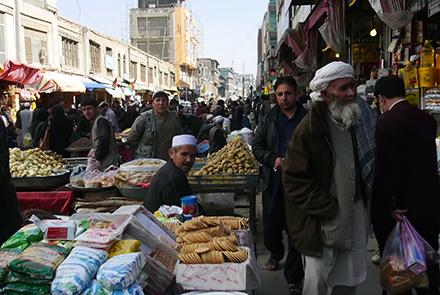As the country is moving towards the presidential election – the third in Afghanistan’s history after 2001-- a new survey by US analytics and advisory company Gallup shows high levels of suffering among Afghans who “remain hopeless” about their future.
The survey, which covers Afghans’ situation in 2018, shows a “bleak picture.”
Afghans’ average ratings of their current lives, and predicted ratings of their lives in five years, matched or fell below previous record lows for any country worldwide.
On a scale where “0” represents their worst possible life and “10” their best possible life, Afghans gave an average rating of 2.7 in 2018 -- tied for the lowest in any country since Gallup began this survey. Asked to predict where their lives would be in five years on the same scale, Afghans’ average response was 2.3, a new low for any country in any year.
Afghans’ 2018 life ratings were remarkable not just for the low averages, but because this was the first time in more than a decade of data collection around the world that people’s predicted rating for their future lives was lower than their current-life rating (based on the population average).
The survey shows that for the second consecutive year, no Afghans rated their current and future lives positively enough to be considered “thriving” (a rating of 7 or higher).
At the same time, the percentage who rated their lives so poorly that they are considered “suffering” shot to a record high of 85%.
This is a new record not only for Afghanistan, but also for the world. The country also had the highest ratings of suffering in 2013, 2014 and 2017.
The survey asked specific questions about day-to-day experiences and emotions:
Just over 1 in 3 Afghans (36%) said they smiled or laughed a lot the previous day, which was down from 52% in 2016; the figure matches the lowest Gallup has ever recorded in any country.
In fact, 52% of Afghans said they experienced worry for much of the previous day, up from 42% in 2016. The proportion of Afghans who say they experienced enjoyment and who say they were treated with respect the previous day both fell below half (48%) for the first time in 2018.
Analysts of the survey conclude:
“Lacking safety and security, Afghans have had little opportunity to improve their economic status or rebuild critical infrastructure, such as roads, schools and healthcare facilities. Conflict in the countryside has led hundreds of thousands of Afghans to flee their homes, leading to an influx of displaced people in urban centers such as Kabul, where poverty and unemployment are rampant. These conditions are the context for Afghans' record-low levels of both wellbeing and hope for the future. It is difficult to foresee the implications that current events may have for the population's wellbeing over the long-term.”



Comment this post